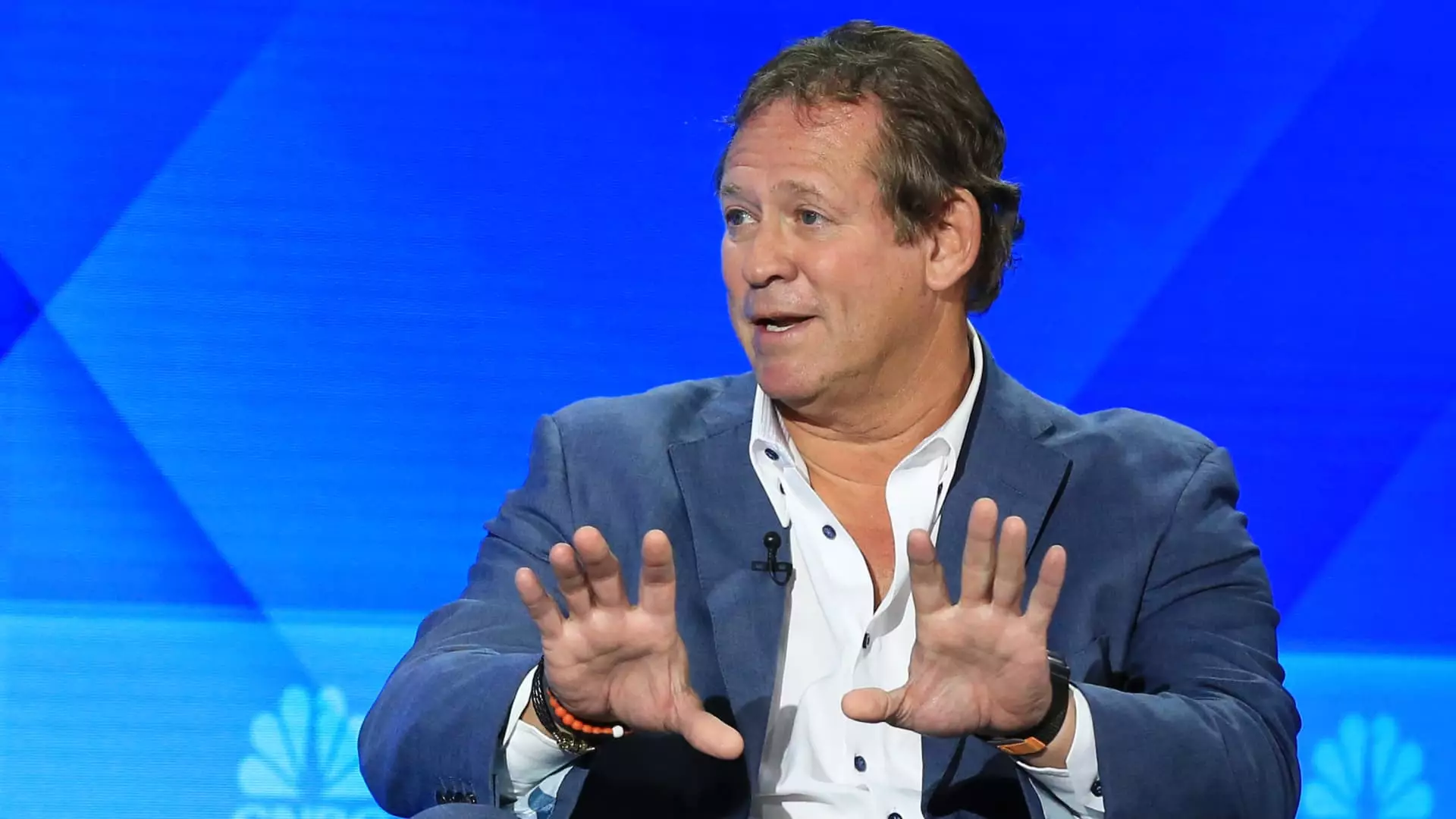In an investment landscape often dominated by equity drama and tech frenzy, the current bond market stands out like a lighthouse—its beacon signaling an opportunity that doesn’t come around often. Rick Rieder from BlackRock labels the present high-yield environment a “generational opportunity” for investors. This is no small claim, considering Rieder’s two-decade career watching bond markets and cycles. For too long, investors endured ultra-low interest rates, robbing bonds of their traditional charm: steady income. Now, yields have surged back to levels not seen in decades, resetting fixed income’s role in portfolios—but also reshaping the risks and rewards investors face.
The narrative that bonds simply protect portfolios during stock downturns is outmoded. Rieder wisely highlights a new reality: duration—the measure of interest rate sensitivity—no longer reliably cushions against equity market declines. Instead, the real value today lies in fixed income’s ability to generate high coupons, providing income that acts as a financial shield when stocks stumble. This income focus reflects an important shift away from past strategies that emphasized bonds’ price stability or capital preservation.
A Safer Bet Than You Might Think
Skeptics often argue that higher yields come tied hand-in-hand with greater risk—usually credit risk or default risk. Yet, Rieder points out an important mitigating factor: companies have significantly deleveraged since the Covid-19 crisis. The post-pandemic period witnessed businesses paying down debt, thereby enhancing creditworthiness. This means investors may reap juicy yields while not necessarily taking disproportionate risk. It’s a welcome contrast to past intersections of high yield and financial instability, where risk premiums ballooned alongside volatility.
Still, such an environment demands discipline. Blindly diving into high-yield bonds without understanding the evolving credit landscape would be foolish. But selectively targeting sectors like European credit or U.S. securitized products—areas Rieder endorses—presents practical pathways to harvest elevated income while preserving portfolio integrity.
Europe’s Hidden Advantage for Dollar Investors
One of the subtler yet game-changing aspects of the current environment involves currency dynamics. For U.S. dollar-based investors, investing in European bonds is not just about yield; it’s about leveraging a “cross-currency swap benefit” that has been virtually absent for decades. Essentially, hedging currency risk while holding European bonds adds an extra 2% to 2.5% return on top of the nominal yield. This enhancement transforms what might seem like incremental returns into compelling income streams that justice investors’ capital allocation decisions.
In particular, peripheral European sovereign debt, such as Spanish or Italian bonds, emerges as a sweet spot. These markets offer attractive yields without substantial concerns about oversupply, a critical factor that often weighs on bond pricing. For those investors confident in Europe’s ongoing recovery, this is a strategic niche too valuable to overlook.
Balancing Income Sources: The ETF Route
It’s telling that Rieder manages the iShares Flexible Income Active ETF (BINC), which offers a practical blueprint for investors wanting to capture this lucrative yield environment. The fund’s diverse composition demonstrates a thoughtful embrace of various fixed-income segments: about 35% are securitized products like mortgage-backed securities, and the remainder includes high-yield corporate bonds and agency MBS.
Notably, the shift away from traditional investment-grade bonds to more income-rich assets reflects a pragmatic adaptation to today’s reality. While investment-grade bonds’ yields remain comparatively paltry, high-yield bonds and agency mortgage-backed securities afford higher coupons with reasonable liquidity. This diversified approach helps balance income with risk, critical in an era where fixed income market dynamics defy old assumptions.
The Inescapable Risk: America’s Ballooning Deficit
Despite the allure of high yields, the most ominous backdrop remains the soaring U.S. federal deficit. With the Treasury’s monthly shortfall hitting $316 billion as of May, the sheer volume of debt issuance needed to fund government obligations pressures long-term interest rates. This factor injects volatility and uncertainty, especially given long-duration bonds’ sensitivity to inflation expectations.
Though inflation seems to be on a gradual trajectory downward, near-term risks persist, making the bond market anything but risk-free. Rieder acknowledges that while he believes the U.S. can eventually “outrun the debt,” the path is sure to be volatile. Investors must recognize the delicate balance between tapping today’s uncannily high yields and managing potential shocks from fiscal dynamics and monetary policy shifts.
Innovation and Tariff Policies: Catalysts for Growth—and Bond Returns
Rieder’s perspective also offers a more optimistic midterm outlook shaped by America’s “greatest technology revolution” underway. A boost in productivity and innovation can act as a brake on inflation, eventually enabling lower interest rates again. This is a hopeful scenario consistent with center-right optimism—market forces and innovation, rather than overbearing government interventions, will realign the economy healthier and more sustainably.
However, unsettled geopolitical forces loom, including uncertainties around trade tariffs. The pause on reciprocal tariffs set to expire in early July injects a dose of unpredictability. Corporate CEOs holding back capital expenditures and research spending until trade clarity emerges signal the real-world impact policy decisions wield over economic activity and, by extension, bond market performance.
Reframing Fixed Income in a Changing Era
The current bond market exposes the need for investors to rethink conventional wisdom critically. Fixed income is no longer the simple “safe harbor” many assumed it to be during years of suppressed yields. Instead, it is a complex blend of opportunity and caution, emblematic of wider market transitions. Rieder’s insights remind us that while the rewards are significant today, the landscape remains dynamic and nuanced.
For the center-right investor who values market discipline, innovation-driven growth, and fiscal prudence, this environment demands engagement, selectivity, and a forward-looking stance. Ignoring today’s “generational opportunity” could mean missing out on income streams that stabilize portfolios, while blindly embracing the market without vigilance risks underestimating structural headwinds. Recognizing and navigating these tensions will define successful fixed-income strategies in the immediate future.

